How to grow cucumbers on a windowsill in an ordinary city apartment, recommendations for beginning gardeners.
|
Of course, you can grow cucumbers on a window in winter, but it is a troublesome and expensive task. This activity is more for enthusiasts. |
Varieties of cucumbers for growing on a windowsill
For growing cucumbers on a windowsill in winter, only early-ripening parthenocarpic hybrids with small vines are suitable. Bush cucumbers are also unacceptable, since they require a large feeding area, which cannot be provided on the windowsill.
Parthenocarpics have a predominantly female or only female type of flowering and do not require pollination. Bee-pollinated cucumbers are categorically unsuitable for winter cultivation, and self-pollinating varieties require pollen to somehow get onto the pistil. Since there are no insects or wind on the windowsill in winter, when growing such cucumbers it is necessary to carry out artificial pollination of each flower.
Long-climbing cucumbers are also not suitable for growing on windowsills. Their lashes are 3 meters or more, and they will have nowhere to develop. In addition, long-climbing cucumbers, as a rule, grow longer and begin to bear fruit later. When growing at home in winter, it is necessary to get a harvest of greens as quickly as possible. This saves a lot of time and money.
Growing cucumbers on a windowsill in winter, tips for beginners
Cucumbers, with proper care, can be grown all year round. The cultivation of crops in greenhouses is based on this feature. You can grow cucumbers in winter and on the windowsill in an ordinary apartment.
Timing of sowing seeds
In winter, cucumbers can be grown on the windowsill in 3 periods.
- Sowing in December.Zelentsy appear by the beginning of February
- Sowing in January. The harvest is obtained in late February-early March.
- When sown in February, the first cucumbers appear at the end of March.
But in reality, the best time for sowing is January and February. In December, cucumbers do not have enough light for normal development, and they will grow only with prolonged illumination.
At home, you can plant cucumbers in September-October, but with decreasing daylight hours it is impossible to get a good harvest of greens.
To obtain an extra-early harvest, cucumbers are planted on the windowsill in March-April, but this method is suitable for those who do not have a summer cottage, as well as for those who grow early cucumbers for sale. At this time, everyone else’s window sills are occupied by other seedlings and there is no time for cucumbers.
How to grow cucumbers on a windowsill
Cucumbers in the apartment are grown only without seedlings. Seeds are sown in prepared containers. The root system of the crop is rather weak, but when planted in a common seedling box, each plant requires a feeding area of at least 100 cm2, and the depth is not less than 15 cm.
Therefore, it is better to grow cucumbers at home in individual containers. Large plastic cups with a volume of at least 1 liter, plastic bottles, and flower pots are suitable for this. A drainage hole must be made at the bottom of the container to drain excess water.
Peat pots are suitable for cucumbers during the initial growth period. When the plants grow, they are placed together with the pot in a larger container and covered with soil. With this method, the roots of the crop develop evenly, do not entwine the earthen ball, and, therefore, do not suffer from a lack of nutrition and moisture.
Soil preparation
To grow cucumbers, you need highly fertile, loose, water- and air-permeable soil mixtures with a medium reaction of 5.5-6.5. Plants can grow well in slightly acidic soils with a pH of 5.1-5.4, but the yield in this case is reduced, although only slightly.
Peat soil mixture is ideally suited for planting cucumbers, provided that such soil has low acidity and sufficient humus content. In winter, if the land has not been prepared since the fall, cucumbers are grown on purchased soil mixtures with a peat content of no more than 50%.
If possible, you can prepare the soil yourself. The soil mixture is prepared from peat, humus and fine-grained river sand in a ratio of 3:3:1. Sand can be replaced with coconut shavings.
Coconut chips have a neutral reaction (pH 7.0), retain moisture very well, perfectly loosen the soil and allow air to pass through. To prepare the soil, coconut shavings are poured with water according to the instructions. After 1-2 minutes, the chips will begin to absorb moisture and swell greatly. After 30-40 minutes, the soil will be ready and can be added to the soil mixture.
Cucumbers can be grown in clean coconut soil, but it is necessary to slightly acidify it before sowing the seeds. To do this, the shavings are soaked in a slightly pink solution of potassium permanganate.
To remove disease spores and wintering pests, the soil is frozen. Freezing is preferable to calcination, since at high temperatures the fertilizers added to the soil mixture decompose, and at low temperatures they are preserved. The soil is taken outside or into a room with sub-zero temperatures and left for 5-7 days, then brought into the house. The earth must completely thaw and warm up, then it is taken out into the cold again. The procedure is repeated 3-4 times.
Fertilizers are added to any self-prepared soil:
- ammonium nitrate or urea 1 tbsp/kg;
- superphosphate 1 tbsp/kg;
- potassium magnesium or potassium sulfate 3 tbsp/kg.
You can apply liquid or solid complex fertilizers according to the instructions.
The soil must be warmed up before sowing. If the ground temperature is below 17°C, the seeds will not germinate. To warm up, the soil in bags or boxes is placed on a radiator and kept for several days.
2-3 before sowing, the soil is disinfected by spilling with a warm pink solution of potassium permanganate or Fitosporin. You can add Trichodermin to the soil instead of Fitosporin, but they cannot be used together, since these are different types of microflora, and they will only mutually destroy each other. If the soil is purchased and biological products have already been added to it, then there is no need to further disinfect it.
Preparing seeds for planting
Cucumbers are usually heated before sowing. This is done to increase the production of female flowers. However, all modern hybrids have a predominantly female type of flowering; a small number of male flowers are formed or they do not appear at all. Therefore, there is no need to warm up such seeds.
Before sowing, the seeds are soaked 1-2 days. If they are old, then growth stimulants (Gibbersib, Gibberellin, Zircon) are added to the water. Although it is written on the packets of hybrid seeds that they are sown without pre-treatment, experience shows that then their germination rate is much worse.
To prevent blackleg, seed material is immersed for 20 minutes in a weak solution of potassium permanganate. The skin of cucumbers is sensitive and if the solution is too strong, they can be burned. Seed material is always processed, even though it has already been processed.The protective effect of fungicides lasts several months and by the time of sowing, as a rule, it will already be over.
1-2 days after soaking, the seed is dried, without waiting for it to peck, and sown.
Sowing seeds
After soaking, there is no need to wait for the seeds to bite. After a maximum of 48 hours, they are dried and sown. Sprouted cucumber seeds (and pumpkin seeds in general) do not germinate well, since the emerging root (and it is this root that germinates) breaks off very easily when covered with soil. Damage to the root of the seedling means the death of the seed. It will be better if the seeds swell but do not germinate yet.
Cucumbers are sown immediately in the container in which they will grow. The prepared warm soil is well watered and 3-4 seeds are sown in each pot. Sprinkle them with a layer of 1.5-2 cm of dry soil. After sowing, the soil is not moistened, otherwise the seeds will go deep into the soil. The pots are covered with film and placed on a radiator until shoots appear.
As a rule, 1-2 cucumbers sprout in one pot. But even if they all germinate, you can choose the most powerful one and cut off the rest near the ground.
Caring for cucumbers on the windowsill
- If the ground is warmed up, seedlings appear quickly - within 4-6 days.
- At a soil temperature of 18-20°C, sprouts appear in 10-12 days.
- If the soil temperature is below 17°C, cucumbers will not sprout.
As soon as the plants have sprouted, they are placed on the windowsill, where the temperature is at least 20°C. The culture tolerates partial shading well, and in the southern regions, where there are enough sunny days in January-February, cucumbers can be grown on an eastern and even north-eastern windowsill. In the northern regions, with sufficient lighting, the eastern side is suitable, but the southern and western windows are more suitable for growing.
Temperature
Immediately after germination, the temperature cannot be lowered, since at this stage cucumber seedlings very sensitive to cold. Until 2-3 true leaves appear, the plants are kept on a warm windowsill (temperature at least 20°C, preferably 23-25°C). And only after several true leaves have appeared can the temperature be reduced. But this is extremely undesirable, since in order to bear fruit the plant needs to accumulate the sum of active temperatures. In winter, this can only be done with artificial heating.
If it is cold on the windowsill, the plants are additionally heated, otherwise there will be no harvest. In winter, cooling of the soil often occurs on the window. Cucumbers stop growing leaves turn yellow. To warm up, boxes with containers are placed on a radiator for several hours, and to retain heat in the future, each pot is lined with foam plastic.
Backlight
In winter, plants must be illuminated. Cucumbers need at least 13-15 hours of daylight to grow. But in winter, when there is not enough light, the lighting should be more intense. Therefore, before the formation of lashes begins, they are illuminated for at least 17-18 hours in December-early January, and 15 hours in February-March. To increase illumination, reflective materials are placed on the windowsill: foil, mirrors.
To begin flowering and fruiting, cucumbers require shorter daylight hours. Therefore, as soon as the lashes are formed, additional lighting is reduced. If the crop bears fruit in December, then additional lighting should be at least 16 hours. This is due to the fact that in December it is almost always cloudy, and the sun lamps still cannot be completely replaced. If December is sunny, then the cucumbers are illuminated for 15 hours.
In January-February, plants are illuminated for 12 hours to form buds.
Watering cucumbers
Water the cucumbers only with settled warm water (not lower than 20°C). Cold water in winter, especially with a lack of heat, can cause roots to die.
Cucumbers are very demanding of moisture. Watering is carried out as the soil dries. If the soil is wet to the touch, but does not leave marks on your hands, you need to water it; if your hands get dirty, watering is not required. Drying out has a detrimental effect on plants.
When growing cucumbers on a windowsill in winter, water them in the morning or in the afternoon, but not in the evening. The crop evaporates the largest amount of moisture in the morning. Therefore, when watering in the evening, there will be droplets of moisture on the leaves and the window in the morning, since the plants, saturated with water, begin to release water. Such intense evaporation in the dry air of an apartment is extremely undesirable and does not occur when watering in the morning and afternoon. Wet leaves and damp soil are sources of fungal infections.
Water the cucumbers only at the roots.
Air humidity
The crop requires air humidity of 80-85% for normal growth. In winter, the humidity in the rooms is 40-50%, which is bad for cucumbers. When humidity is low, the lower leaves of plants begin to turn yellow and dry out, and the stem gradually becomes bare. Seedlings on the windowsill may dry out without producing true leaves.
Therefore, immediately after emergence, cucumbers are sprayed at least once every 2-3 days. Containers with water are placed on the radiators under the windowsills.
Feeding cucumbers in the apartment
If the soil was filled with fertilizers during sowing, then fertilizing begins only when the first true leaf appears. They are carried out throughout the growing season with an interval of 5-6 days.
When growing cucumbers in winter, they need to be fed more intensively than in summer. They love fresh manure (except pig manure).But when growing on a windowsill, due to the persistent unpleasant odor, this method is excluded. Those who keep birds in cages (or chickens in the yard) are in a more advantageous position. Cell bedding soak in hot water for 20-30 minutes until the droppings are soaked, then filter. The resulting solution is diluted 1:10 and the cucumbers are fed. Bird lovers are usually not so sensitive to foreign odors in the room.
Plant remains from indoor plants (broken twigs, wilted and fallen leaves, potato peelings, banana skins) are suitable for preparing herbal infusion. Plant remains are placed in a saucepan, filled with water and left to steep for several days. Then the solution is filtered, diluted 1:3 with water and the cucumbers are fed.
Ash infusion. Ash is now sold in garden stores, so even in winter it is easy to find. Prepare the infusion according to the instructions on the package. The prepared solution is diluted with water and fertilized.
Humates and liquid fertilizers for cucumbers Use only if there are no other organic fertilizers. 1 cap (5 ml) is diluted in 10 liters of water, and the resulting solution is fed to cucumbers.
Complex mineral fertilizers This is the worst option for feeding. But when growing cucumbers in winter, due to the lack of other fertilizers, it is necessary to use it. For cucumbers, those fertilizers that contain a sufficient amount of nitrogen and the dose of potassium exceed the dose of phosphorus are suitable. But it is impossible to grow cucumbers in winter using mineral fertilizers alone. During the growing season there must be at least 4 organic fertilizers.
It must be remembered that organic matter improves soil fertility, while mineral water has an effect on plants.Cucumbers need not so much nutrition as high soil fertility.
When fertilizing, you should not overuse nitrogen. Zelentsy easily accumulate it and become dangerous to humans.
But a lack of nitrogen leads to a decrease in yield.
- Cucumbers gain a lot of green mass, but do not bloom well - there is too much nitrogen.
- The cucumbers are weak, their vines are thin, the greens that have started fall off (with proper watering) - lack of nitrogen.
- In order not to upset the balance of elements, fertilizers containing nitrogen are alternated with ash, which does not contain it.
After the first week of fruiting, cucumbers, if they were previously fed with mineral water, need intensive organic feeding, since during this time they consume all the substances added to the soil before.
Forming cucumbers on the windowsill
Strongly climbing cucumbers always lead to one stem. It is impossible to feed several stems on a windowsill in winter; Neither the plant nor the owner will tolerate this. Cucumbers definitely need a trellis to climb. On a bare windowsill the lashes will be too cold and dry. All emerging side shoots are pinched.
Weakly climbing varieties can be carried out in 2-4 stems. A small whip is unable to produce a large number of cucumbers, especially when grown in winter. The main stem is pinched after 3-4 leaves. From the 2nd order lashes that appear, choose the 2-3 strongest ones, which are let along the trellis or tied up. When grown in winter, the plant cannot feed more than 3 short vines. To prevent the lashes from getting tangled, they are directed in different directions. Each lash must have its own support.
After the first cucumbers are picked in winter, the lower leaves of the crop begin to dry out very quickly. This is a normal process.The plant cannot feed all the leaves, flowers and greens at the same time, so it gets rid of extra “freeloaders”. If the lower leaves turn yellow, they are removed.
Harvesting Rules
Early varieties of cucumbers (and others are not grown on a windowsill in winter) begin to bear fruit 40 days after germination. At this time, the plants have not yet matured. Therefore, the first fruits to set are picked at the ovary stage.
The first greens are the most difficult to cultivate. A plant that is not yet fully formed gives all its strength to them, which inhibits its growth and further development. Having thus allowed the lashes to get stronger, in the future they harvest a much larger harvest than if the firstborns are raised to a normal, full-fledged state.
Zelentsy are removed every 2-3 days. On the windowsill, borage can be viewed every day and full fruits can be removed. If the harvest is not harvested in time, the growth of further ovaries and the formation of new fruits is noticeably inhibited. One overgrown cucumber in winter stops the growth of the entire vine. If this is allowed, then in winter conditions on the windowsill the plant may even complete its development.
In winter, cucumbers do not grow to the same state as in the greenhouse. In winter conditions, with a lack of all growth factors, such a fruit is overgrown and inhibits further fruiting. This especially applies to growing cucumbers in December-January. Zelentsy are harvested in smaller sizes in winter than in summer.
Diseases and pests of cucumbers in the apartment
Pests
When growing cucumbers at home in winter, they are not threatened by any insects, most of which have a dormant period at this time. But in indoor conditions in spring and late autumn, fungus gnats are active. They are omnivores and will not leave cucumbers unattended either.
Fungus gnatand these are the same indoor midges that are so annoying in the fall and spring, when supplies of vegetables appear in the house. The midges themselves, apart from aesthetic discomfort, are not harmful. Plants are attacked by their larvae, which live in damp soil. They eat away the roots. Even minor damage is dangerous for cucumbers. They mainly attack plants in October and mid-March.
Midges and their larvae cannot tolerate dry air and insufficiently moist soil. But when growing cucumbers on a windowsill, you can neither reduce the intensity of watering nor reduce air humidity. Therefore, the only way out is to water the plants with insecticides: Fly eater, Zemlin, Aktara, Bazudin.
Diseases
There are also few diseases in cucumbers on the windowsill. Indoors, despite all efforts, the air is quite dry, so pathogens practically do not develop. The only thing that can seriously threaten cucumbers when grown in winter is blackleg. It can appear at any stage of development, but most often it affects seedlings and young plants with 1-2 true leaves.
If the stem becomes thinner near the ground and a constriction forms, the plant is removed and the rest are watered with a solution of potassium permanganate.
Mistakes when growing cucumbers in winter
All of them are associated with the inability to create favorable conditions for plants on the windowsill.
- The seeds don't germinate. If they are fresh, then there are no shoots due to unheated soil. Cucumbers require a soil temperature of at least 18°C to germinate. It is necessary to warm the ground and re-sow.
- The shoots are stretching out. Insufficient lighting. To gain green mass in winter, the crop must be supplemented with light. Although it grows well in the shade, it requires light for normal development.
- Cucumbers don't bloom for a long time. Excessive lighting.35-40 days after germination, the plants are illuminated only 12 hours a day. Then they will move on to flowering and fruiting.
- Plants shed their ovaries. Lack of nitrogen. Organic feeding should be done.
- The culture is powerful, grows actively, but blooms poorly and forms few greens. Excess nitrogen. The nitrogen component should be reduced and the dose of potassium in the fertilizing should be increased.
- The leaves are drying. The air is too dry. It is necessary to increase the humidity. Cucumbers are regularly sprayed.
- Only the lower leaves dry out, otherwise the cucumbers are healthy and bear fruit well. This is normal. The culture pays all its attention to greens. She doesn’t have enough strength to feed the extra “freeloaders.” Yellow and dry leaves are removed.
In early varieties, fruiting ends 30-35 days after the first cucumbers appear. Further feeding and other favorable conditions cannot change the situation. The plants have given everything they could and their potential is exhausted.
Conclusion
Growing cucumbers at home in winter is extremely troublesome.
- Firstly, it is very expensive. The costs of growing several dozen greens far exceed the costs of buying finished products in a store.
- Secondly, the process is very labor-intensive. Cucumbers on the windowsill always need to be given a sufficient amount of time and effort. If there is no such opportunity, then there is no harvest.
- Thirdly, the taste of greens is not up to par. They taste like cucumbers grown in greenhouses, that is, the cucumber smell and taste are practically absent.
If you have the opportunity and desire to get fresh cucumbers for the holiday, you can try growing them. Unlike tomatoes and peppers, they are easier to care for, but the culture takes much more time.
You might be interested in:
- Growing early cucumbers in a greenhouse
- Forming cucumbers
- How to cure cucumbers from diseases
- Pest Control
- All articles about growing cucumbers
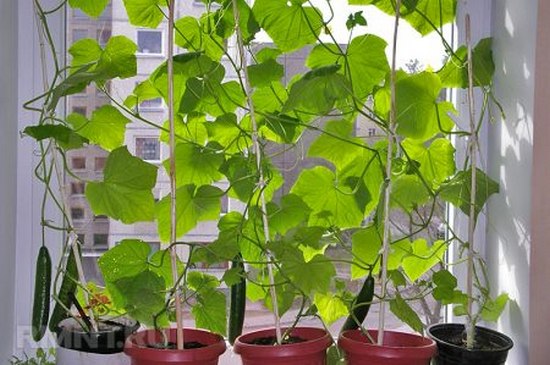
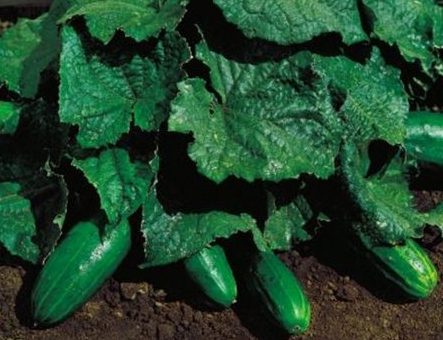
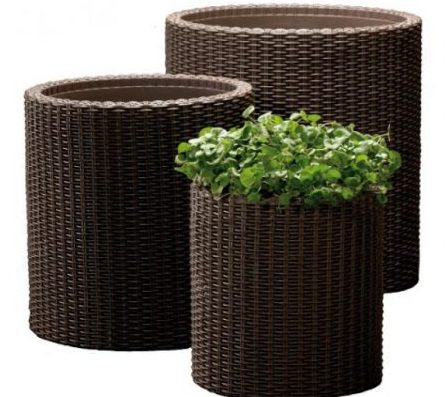

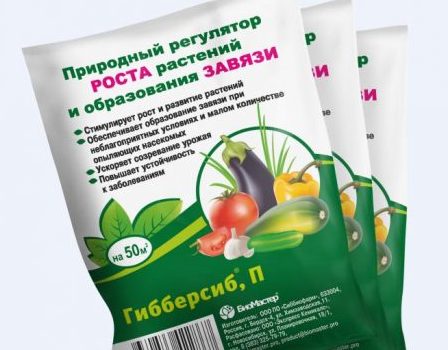
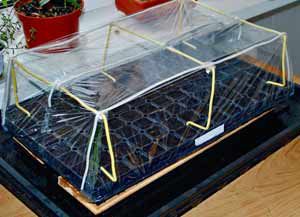
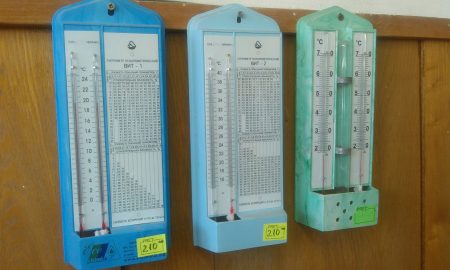
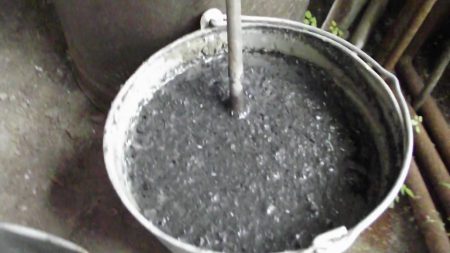
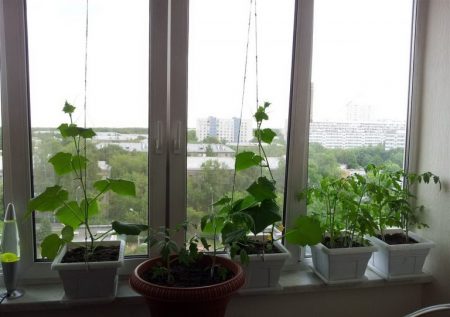
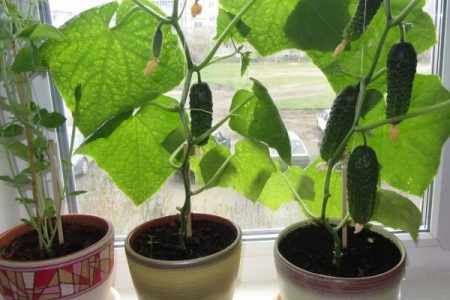


 (7 ratings, average: 3,43 out of 5)
(7 ratings, average: 3,43 out of 5) CUCUMBERS NEVER GET SICK, I'VE BEEN USING ONLY THIS FOR 40 YEARS! I SHARE A SECRET WITH YOU, CUCUMBERS ARE LIKE THE PICTURE!
CUCUMBERS NEVER GET SICK, I'VE BEEN USING ONLY THIS FOR 40 YEARS! I SHARE A SECRET WITH YOU, CUCUMBERS ARE LIKE THE PICTURE! You can dig a bucket of potatoes from each bush. Do you think these are fairy tales? Watch the video
You can dig a bucket of potatoes from each bush. Do you think these are fairy tales? Watch the video
 How our fellow gardeners work in Korea. There is a lot to learn and just fun to watch.
How our fellow gardeners work in Korea. There is a lot to learn and just fun to watch. Eye trainer. The author claims that with daily viewing, vision is restored. They don't charge money for views.
Eye trainer. The author claims that with daily viewing, vision is restored. They don't charge money for views. A 3-ingredient cake recipe in 30 minutes is better than Napoleon. Simple and very tasty.
A 3-ingredient cake recipe in 30 minutes is better than Napoleon. Simple and very tasty. Therapeutic exercises for cervical osteochondrosis. A complete set of exercises.
Therapeutic exercises for cervical osteochondrosis. A complete set of exercises. Which indoor plants match your zodiac sign?
Which indoor plants match your zodiac sign? What about them? Excursion to German dachas.
What about them? Excursion to German dachas.
I planted cucumbers on the windowsill in winter. Their tails dried out. What could be the reason, can you tell me?
Good afternoon, Evgeniya. It is difficult to answer your question, because there can be many reasons.